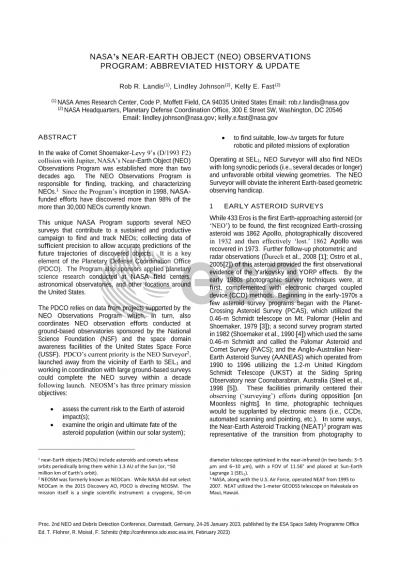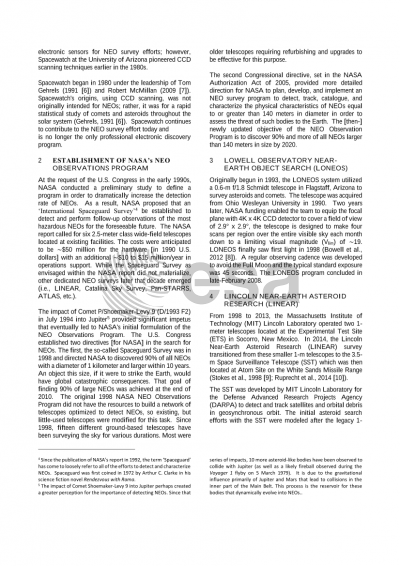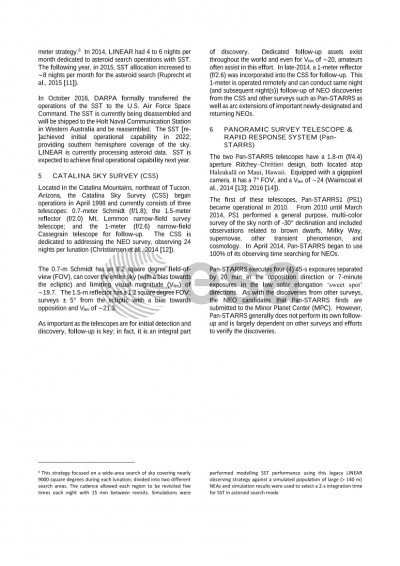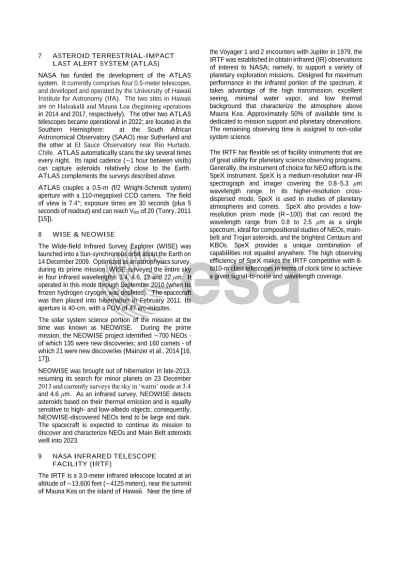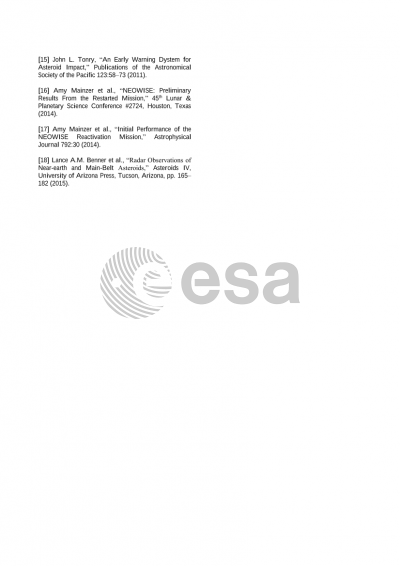Document details

Abstract
In the wake of Comet Shoemaker-Levy 9’s (D/1993 F2) collision with Jupiter, NASA’s Near-Earth Object (NEO) Observations Program was established more than two decades ago. The NEO Observations Program is responsible for finding, tracking, and characterizing NEOs. Since the Program’s inception in 1998, NASA-funded efforts have discovered more than 98% of the more than 30,000 NEOs currently known.
This unique NASA Program supports several NEO surveys that contribute to a sustained and productive campaign to find and track NEOs; collecting data of sufficient precision to allow accurate predictions of the future trajectories of discovered objects. It is a key element of the Planetary Defense Coordination Office (PDCO). The Program also sponsors applied planetary science research conducted at NASA field centers, astronomical observatories, and other locations around the United States.
The PDCO relies on data from projects supported by the NEO Observations Program which, in turn, also coordinates NEO observation efforts conducted at ground-based observatories sponsored by the National Science Foundation (NSF) and the space domain awareness
facilities of the United States Space Force (USSF). PDCO’s current priority is the NEO Surveyor Mission (NEOSM) , launched away from the vicinity of Earth to SEL1 and working in coordination with large ground-based surveys could complete the NEO survey within a decade following launch. NEOSM’s has three primary mission objectives:
• assess the current risk to the Earth of asteroid impact(s);
• examine the origin and ultimate fate of the asteroid population (within our solar system);
• to find suitable, low-Δv targets for future robotic and piloted missions of exploration
Operating at SEL1, NEOSM will also find NEOs with long synodic periods (i.e., several decades or longer) and unfavorable orbital viewing geometries. NEOSM will obviate the inherent Earth-based geometric observing handicap.
Preview
